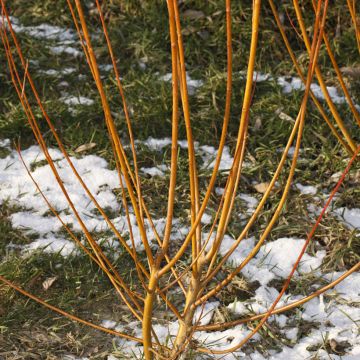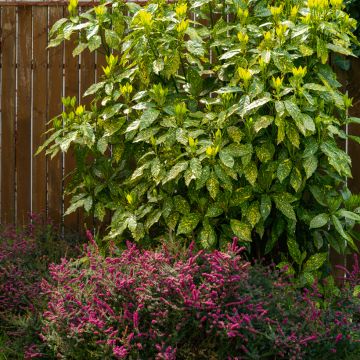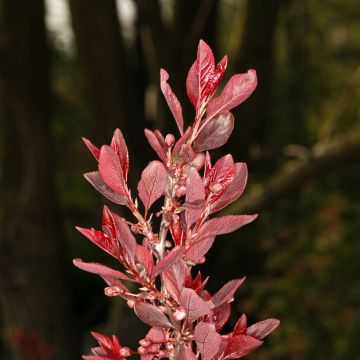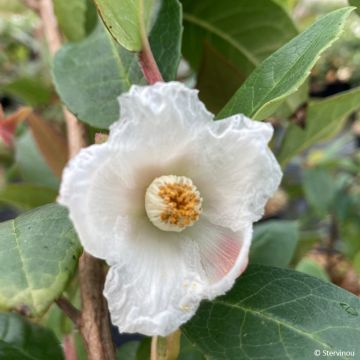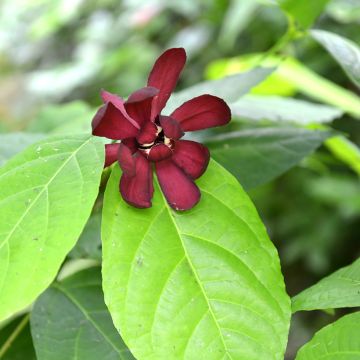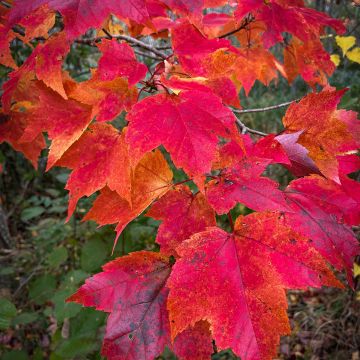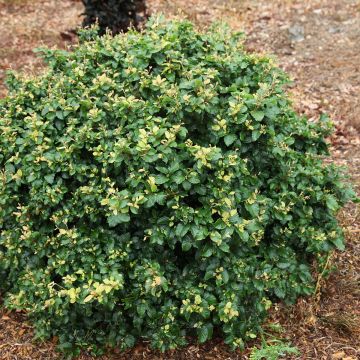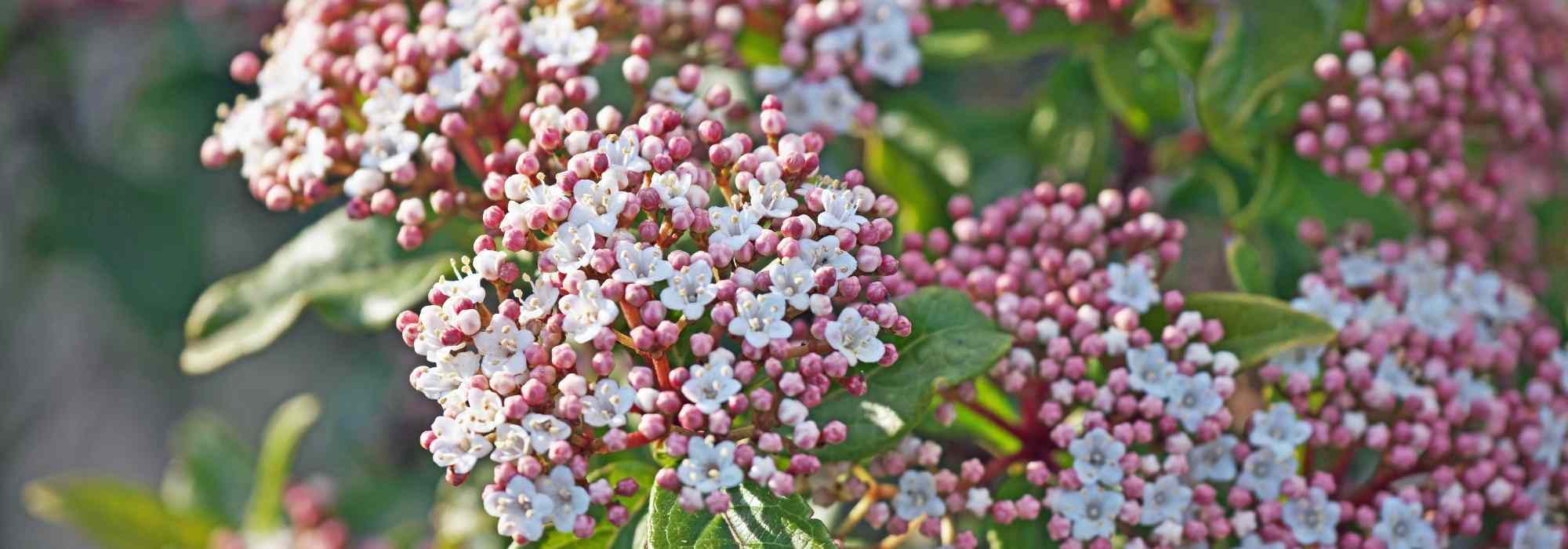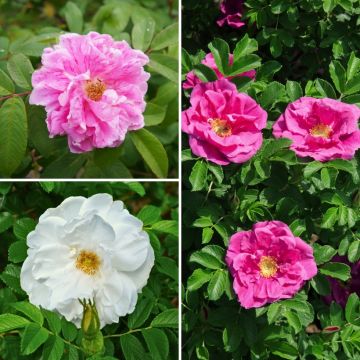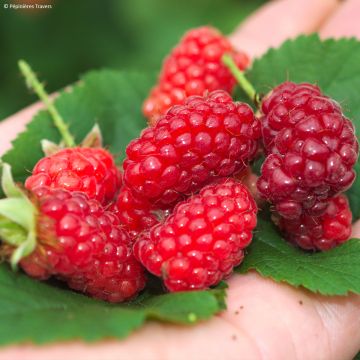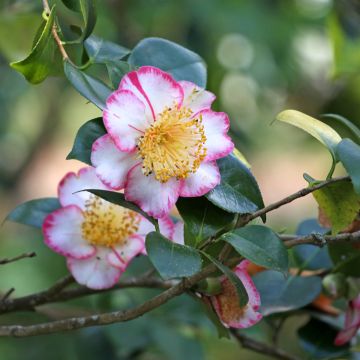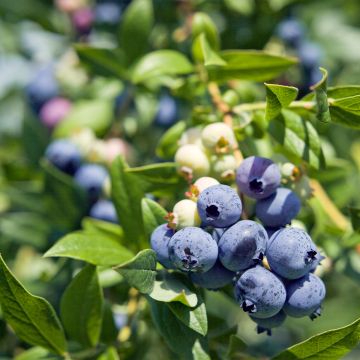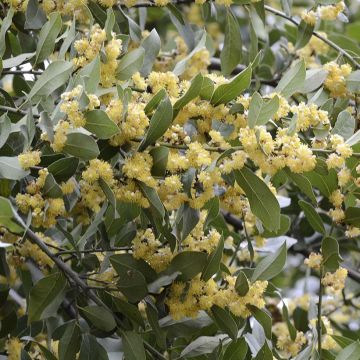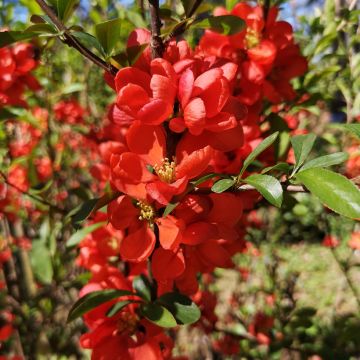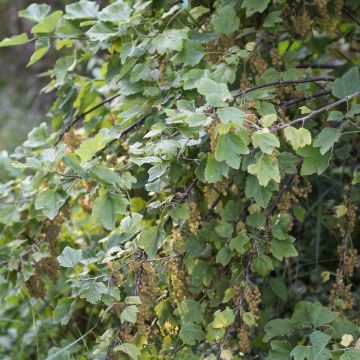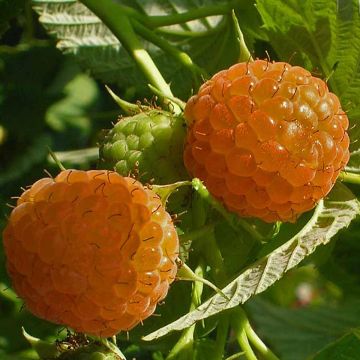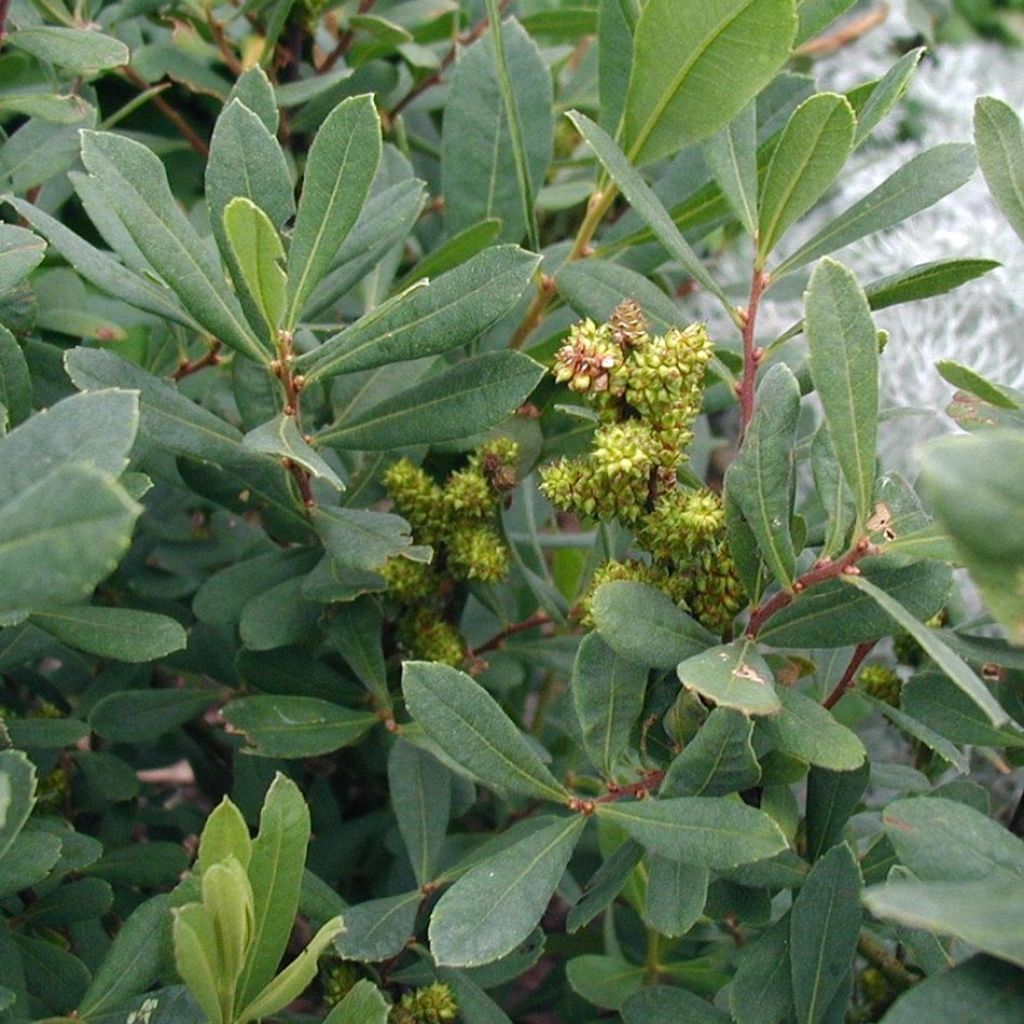

Myrica gale
Myrica gale
Myrica gale
Bog Myrtle, Sweet Gale
Fast delivery, very well packaged.
Ne, 08/04/2022
Special offer!
Receive a €20 voucher for any order over €90 (excluding delivery costs, credit notes, and plastic-free options)!
1- Add your favorite plants to your cart.
2- Once you have reached €90, confirm your order (you can even choose the delivery date!).
3- As soon as your order is shipped, you will receive an email containing your voucher code, valid for 3 months (90 days).
Your voucher is unique and can only be used once, for any order with a minimum value of €20, excluding delivery costs.
Can be combined with other current offers, non-divisible and non-refundable.
Home or relay delivery (depending on size and destination)
Schedule delivery date,
and select date in basket
This plant carries a 24 months recovery warranty
More information
We guarantee the quality of our plants for a full growing cycle, and will replace at our expense any plant that fails to recover under normal climatic and planting conditions.

Does this plant fit my garden?
Set up your Plantfit profile →
Description
Myrica gale, often called the Marsh Myrtle, is a bush native to our indigenous flora that is inextricably linked to wet and marshy areas. This large and bushy shrub is also known as Sweet Gale or Bayberry due to its deliciously aromatic foliage. It offers an early and long-lasting flowering before the foliage appears. In this species, there are male plants, bearing long reddish-brown catkins that are quite decorative, and female plants with short brown catkins. This bush is essential near water sources or in waterlogged soil, in a garden that leaves room for nature.
Myrica gale belongs to the Myricaceae family. This deciduous bush is widespread in northern and western Europe as well as North America, where it is most commonly found in wet and marshy areas such as bogs or marshes, on acidic and poor soil, much more rarely on limestone. The roots of the marsh myrtle host specific bacteria capable of fixing atmospheric nitrogen, indicating an excellent adaptation of the plant to very poor and waterlogged soils.
Sweet Gale has a bushy and dense habit. At maturity, it will reach an average height of 1.50m (4ft 11in) and a width of 1m (3ft 4in), sometimes more. From spring onwards, it has leaves arranged spirally around the branches. They are finely toothed on the edges, spatulate in shape, 2 to 5cm (0.8 to 2in) long, grey-green in colour, and contain an aromatic resin that is very noticeable when crushed. This foliage falls with the arrival of frost in autumn. The flowering period extends from March to May, and it appears before the leaves on the previous year's wood. This bush is generally dioecious, meaning that there are male plants, which only bear staminate flowers, and female plants, capable of bearing fruit in the presence of male plants. The male inflorescences are more visible, consisting of more or less erect catkins that vary in colour from yellow-green to red. The female catkins, short and brown in colour, can produce small fruits called aggregations of drupes, ripening in August-September.
If you have a natural pond, a basin, or a small pond in your garden, plant Marsh Myrtle: fragrant, populated by birds that appreciate it for nesting, visited by insects, this bush is a precious ally for our indigenous flora. This moist soil bush tolerates a wide range of poor soils that it will enrich with nitrogen, allowing the cultivation of more demanding plants alongside it. To accompany it, consider other wetland plants such as alder, willows, Arum, Carex, hostas, Darmera peltata, Petasites, Ligularias, and daylilies, for example.
The foliage of Marsh Myrtle is rich in essential oil. The plant is used in perfumery, and the branches are used by campers to repel biting insects.
Report an error about the product description
Myrica gale in pictures
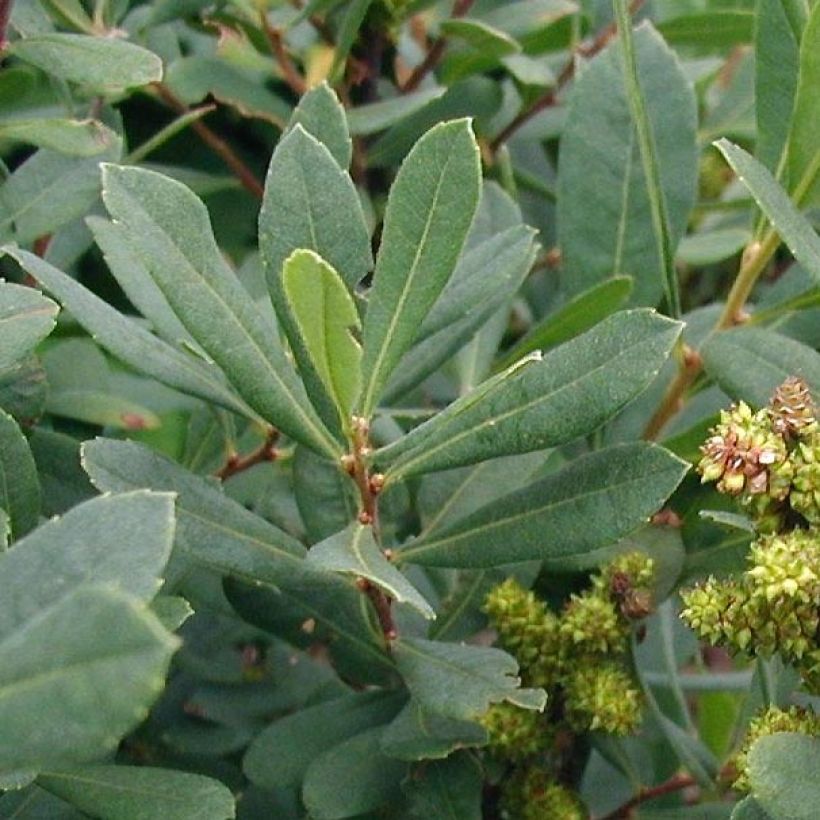

Plant habit
Flowering
Foliage
Botanical data
Myrica
gale
Myricaceae
Bog Myrtle, Sweet Gale
Western Europe
Other Shrubs A to Z
View all →Planting and care
Plant Myrica gale in a marshy or waterlogged soil, even in full sun or partial shade. This bush is particularly suited to wet, peaty or sandy, acidic and poor soils, but it tolerates a wide range of soils, even slightly chalky ones, which it will enrich with nitrogen. It is not afraid of drought. As the plant is dioecious, it will be necessary to plant a male plant among the female plants to obtain fruit formation. Bog Myrtle is a very hardy and carefree plant in wet areas. It flowers on one-year-old wood: if necessary, prune just after flowering.
Planting period
Intended location
Care
Planting & care advice
-
, onOrder confirmed
Reply from on Promesse de fleurs
Similar products
Haven't found what you were looking for?
Hardiness is the lowest winter temperature a plant can endure without suffering serious damage or even dying. However, hardiness is affected by location (a sheltered area, such as a patio), protection (winter cover) and soil type (hardiness is improved by well-drained soil).

Photo Sharing Terms & Conditions
In order to encourage gardeners to interact and share their experiences, Promesse de fleurs offers various media enabling content to be uploaded onto its Site - in particular via the ‘Photo sharing’ module.
The User agrees to refrain from:
- Posting any content that is illegal, prejudicial, insulting, racist, inciteful to hatred, revisionist, contrary to public decency, that infringes on privacy or on the privacy rights of third parties, in particular the publicity rights of persons and goods, intellectual property rights, or the right to privacy.
- Submitting content on behalf of a third party;
- Impersonate the identity of a third party and/or publish any personal information about a third party;
In general, the User undertakes to refrain from any unethical behaviour.
All Content (in particular text, comments, files, images, photos, videos, creative works, etc.), which may be subject to property or intellectual property rights, image or other private rights, shall remain the property of the User, subject to the limited rights granted by the terms of the licence granted by Promesse de fleurs as stated below. Users are at liberty to publish or not to publish such Content on the Site, notably via the ‘Photo Sharing’ facility, and accept that this Content shall be made public and freely accessible, notably on the Internet.
Users further acknowledge, undertake to have ,and guarantee that they hold all necessary rights and permissions to publish such material on the Site, in particular with regard to the legislation in force pertaining to any privacy, property, intellectual property, image, or contractual rights, or rights of any other nature. By publishing such Content on the Site, Users acknowledge accepting full liability as publishers of the Content within the meaning of the law, and grant Promesse de fleurs, free of charge, an inclusive, worldwide licence for the said Content for the entire duration of its publication, including all reproduction, representation, up/downloading, displaying, performing, transmission, and storage rights.
Users also grant permission for their name to be linked to the Content and accept that this link may not always be made available.
By engaging in posting material, Users consent to their Content becoming automatically accessible on the Internet, in particular on other sites and/or blogs and/or web pages of the Promesse de fleurs site, including in particular social pages and the Promesse de fleurs catalogue.
Users may secure the removal of entrusted content free of charge by issuing a simple request via our contact form.
The flowering period indicated on our website applies to countries and regions located in USDA zone 8 (France, the United Kingdom, Ireland, the Netherlands, etc.)
It will vary according to where you live:
- In zones 9 to 10 (Italy, Spain, Greece, etc.), flowering will occur about 2 to 4 weeks earlier.
- In zones 6 to 7 (Germany, Poland, Slovenia, and lower mountainous regions), flowering will be delayed by 2 to 3 weeks.
- In zone 5 (Central Europe, Scandinavia), blooming will be delayed by 3 to 5 weeks.
In temperate climates, pruning of spring-flowering shrubs (forsythia, spireas, etc.) should be done just after flowering.
Pruning of summer-flowering shrubs (Indian Lilac, Perovskia, etc.) can be done in winter or spring.
In cold regions as well as with frost-sensitive plants, avoid pruning too early when severe frosts may still occur.
The planting period indicated on our website applies to countries and regions located in USDA zone 8 (France, United Kingdom, Ireland, Netherlands).
It will vary according to where you live:
- In Mediterranean zones (Marseille, Madrid, Milan, etc.), autumn and winter are the best planting periods.
- In continental zones (Strasbourg, Munich, Vienna, etc.), delay planting by 2 to 3 weeks in spring and bring it forward by 2 to 4 weeks in autumn.
- In mountainous regions (the Alps, Pyrenees, Carpathians, etc.), it is best to plant in late spring (May-June) or late summer (August-September).
The harvesting period indicated on our website applies to countries and regions in USDA zone 8 (France, England, Ireland, the Netherlands).
In colder areas (Scandinavia, Poland, Austria...) fruit and vegetable harvests are likely to be delayed by 3-4 weeks.
In warmer areas (Italy, Spain, Greece, etc.), harvesting will probably take place earlier, depending on weather conditions.
The sowing periods indicated on our website apply to countries and regions within USDA Zone 8 (France, UK, Ireland, Netherlands).
In colder areas (Scandinavia, Poland, Austria...), delay any outdoor sowing by 3-4 weeks, or sow under glass.
In warmer climes (Italy, Spain, Greece, etc.), bring outdoor sowing forward by a few weeks.































